After a Big Rain: N Loss, Erosion, and Other Things
After a Big Rain: N Loss, Erosion, and Other Things
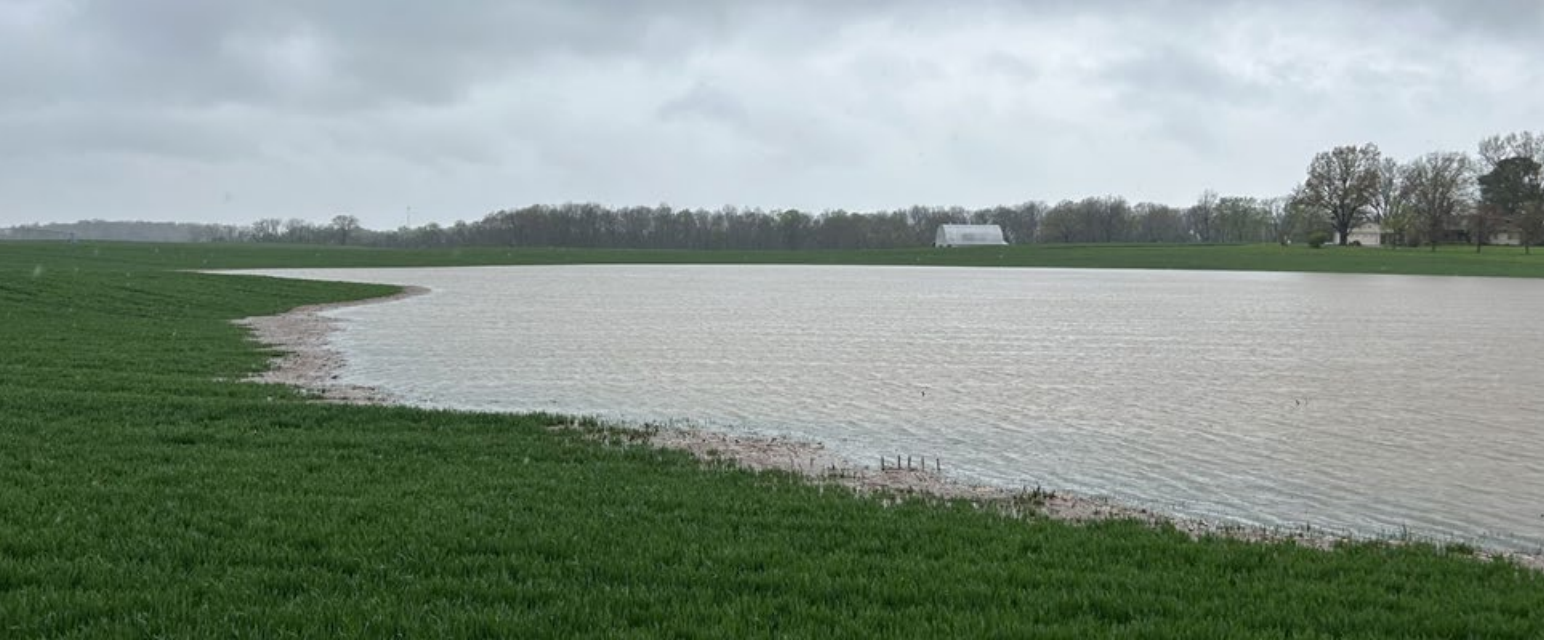
As we write this article, it is still raining – towards an unknown but large amount of rainfall (Fig.1). Credit for stimulating this piece goes to Andy Mills (Meade County ANR agent) and Chris Teutsch, who started the conversation around Andy’s question about potential loss of fertilizer nitrogen (N) from recently fertilized hay and pasture fields. We hope to help folks understand what we do and don’t know about what happens in these unusual situations. Three basic scenarios; fertilized grass (hay and pasture), fertilized wheat, and fertilized fields intended for corn are discussed. The story has been expanded a bit to cover some other questions that are asked after events like this.
Factors impacting N loss in grasslands. With heavy rain like this, fertilizer N loss from fertilized grass sods depends on several factors: 1) the length of time between the rainfall event and the fertilization event; 2) the ability of the sod to take up the applied N (is sod actively growing and dense enough both above and belowground (and rooted deep enough belowground); and 3) the amount of N applied. The Kentucky grasslands that have been fertilized are made up of cool-season grasses that take up nutrients at air/soil temps above 40°F and are actively growing at 55°F. Stronger (thicker, denser, and deep rooted) sods took up more fertilizer N each day before this heavy rain began. That said, there will be a larger amount of unused fertilizer N when the number of days between fertilization and rainfall were fewer and/or with a larger rate of N application relative to N uptake by the grass. More N will be lost when 80 lb N/acre was applied 4 days before this rainy period to an overgrazed pasture that is thin above ground and not deeply rooted than when 50 lb N/acre was applied 12 days ago to a hay field with a thick stand and well-developed root system. As the crop is perennial, a grassland field’s N nutritional status can be adjusted later in the season, in anticipation of future harvests.
Factors impacting N loss in wheat fields. Kentucky wheat fields are actively growing, and most have received the full amount of fertilizer N intended for this season. The same three factors: length of time between rainfall and N fertilization; ability of the growing wheat to take up the N fertilizer; and the amount of N applied all impact N loss. Whether the N was applied in a single dose or split applied is another factor. Wheat has been growing for the past 6 to 7 weeks, taking up both soil and fertilizer N. Better stands with more tillers and more tiller development will have acquired more N – especially if planted earlier and fertilizer N was split into two applications. Fertility programs were essentially complete by 15 March in many Kentucky wheat fields. Still, more N probably remains in the soil, and N loss potential is greater, when 120 lb N/acre was applied on 15 March to a wheat field planted on 15 November than when 60 lb N/acre was applied on both 20 February and 15 March to a wheat field planted on 15 October. The latter likely had greater tiller numbers, tiller growth and rooting depth. At this stage of Kentucky wheat crop growth and development, much of any yield loss will be due to the duration of saturated soil conditions/ponding (low oxygen) and not due to low soil N status. Wheat has taken up much of the fertilizer N (that it could take up). A yield benefit to additional N is less likely. Additional N applied as these soil conditions improve to support field traffic is more likely to improve grain protein levels than yield.
Factors impacting N loss in fields intended for corn. At this time, N losses are probably more important in N fertilized fields intended for corn than in wheat, hay or pasture fields. Very little corn has been planted. There may be some living plant cover (either weeds or cover crops) that could take up fertilizer N in these fields, and the same considerations as indicated for a living grass sod would apply, though the root system under most winter weeds and cover crops tends to be less extensive/deep. However, in western Kentucky many weeds and cover crops have already been terminated and pre-plant N fertilization rates can be large (Fig. 2). The terminated plant cover remains important to controlling another big driver of N loss from these corn fields – soil erosion. Any surface tillage, even vertical tillage, loosens the soil, breaks up residues and accelerates both soil erosion and crusting (which causes even lower infiltration and more runoff). Even if surface applied fertilizer has dissolved and moved into soil aggregates, out of the reach of leaching and before denitrification has started, heavy rainfall can exceed soil infiltration rates, causing runoff to erode nutrient-rich topsoil.
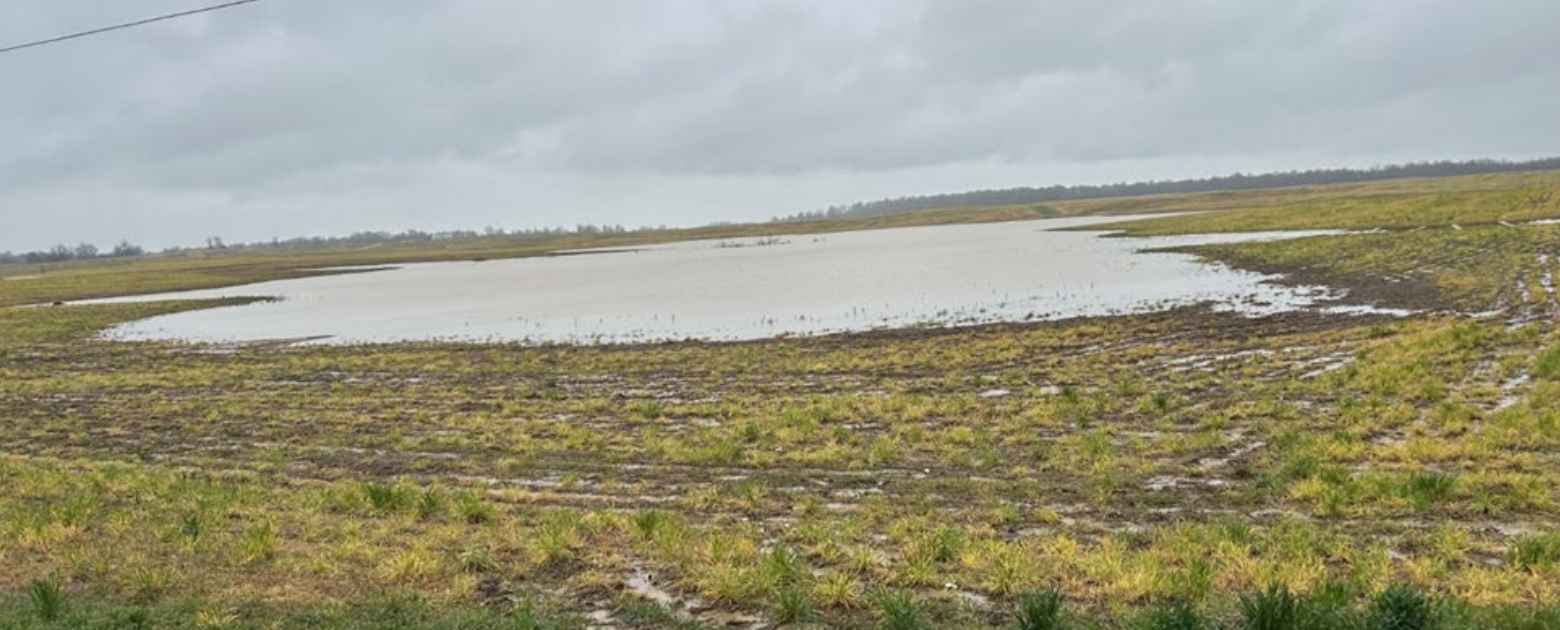
Figure 2. Ponded water in a Caldwell County row-crop field where the cover crop has been terminated. Photo courtesy of Edwin Ritchey.
Runoff and erosion drive N losses in fields intended for corn. At present, runoff and eroded soil nutrient losses are less likely in grassland and wheat fields because the soil is covered with living plants. Runoff water from small watersheds located in Kentucky row-crop farm fields is being collected and analyzed for nutrient amounts and forms (Table 1). The particulate/organic forms of these nutrients are entirely due to erosion of mineral particles and organic matter while the dissolved nutrients are more directly derived from fertilizers. From 40 to 50% of runoff-borne N and phosphorus (P) results from erosion. Potassium (K) loss patterns would likely be similar.
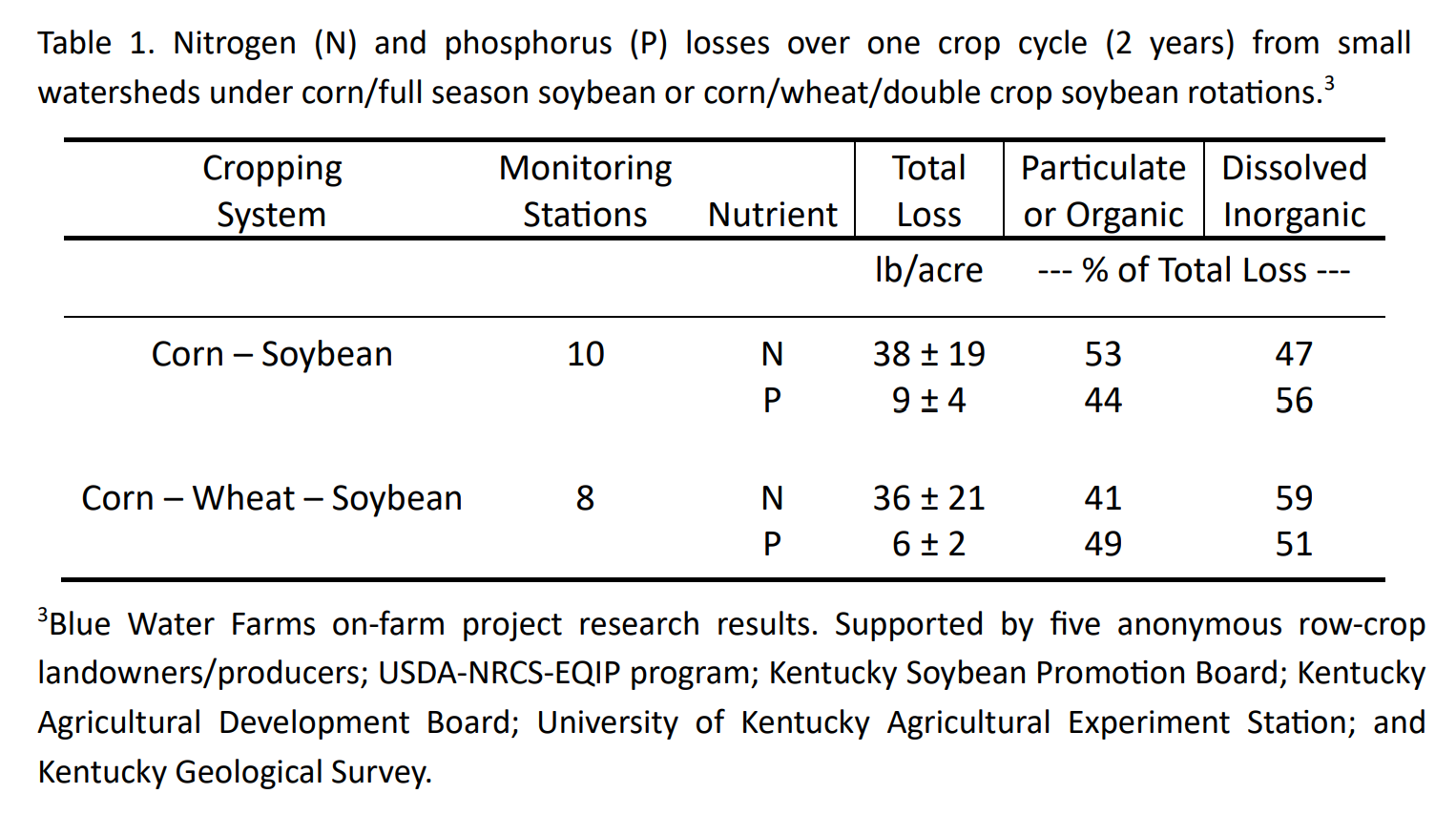
Remaining fertilizer N is susceptible to leaching and denitrification. The fertilizer N that remains is vulnerable to either leaching or denitrification. Those two modes of N loss are driven by other factors. These include the: 1) amount and rate of rainfall; 2) soil infiltration rate and duration; 3) soil drainage; 4) soil texture and structure; and again 5) length of time between the rainfall and fertilization events. Nitrogen fertilizers are very soluble and quickly dissolve into the pore water contained in moist soils - at this time of the year all Kentucky soils are moist. The dissolved N, whether urea (urea is soluble in water – is used in UAN: urea-ammonium nitrate solutions) or nitrate-N, diffuses throughout the pore water found both in and outside soil aggregates. The longer between N application and heavy rainfall, the more time for diffusion to carry dissolved N into aggregates.
Leaching losses of N. When the soil infiltration rate is above average and the rainfall rate and/or rainfall quantity are high, the moving percolating water strips away (leaches) dissolved N that lies in pore water outside the soil aggregates. The percolating water moves especially well through larger pores (macropores) in well and moderately well drained soils. But the pore water found inside the aggregates is ‘bypassed’ by the macropore flow and the dissolved N therein is not leached. Tile drainage can increase macropore flow, soil water percolation rate and nitrate-N leaching, especially when fertilizer N application was only a few days before the heavy rain.
Denitrification N loss is more important than leaching N loss in Kentucky. Denitrification is the biological conversion of nitrate-N to dinitrogen (N2) or nitrous oxide (N2O), both gases. Although leaching is more immediate than denitrification because the latter is biologically driven and takes 2-3 days to get going, in Kentucky, denitrification N losses are more important because of the large number of acres with restrictive layers (e.g. fragipans) and poor drainage (both somewhat poorly and poorly drained) that impede water percolation, causing soil saturation and water ponding.
Nitrogen source can impact N loss. Fertilizer N source can impact N loss potential after heavy rain (Table 2). Both leaching and denitrification losses start with nitrate-N. Applied UAN and ammonium nitrate are 25 and 50% nitrate-N at the outset, respectively, and losses can be more immediate than if urea was used. Injected anhydrous ammonia suppresses soil biology and biological N transformation in the injection volume for a time, remaining longer as ammonium-N. Use of a nitrification inhibitor (nitrapyrin/N Serve©, dicyandiamide/DCD or pronitridine/Centuro©) further delays nitrate-N formation and N loss. Well and moderately well drained (including tile drained) upland soils wet from a series of rains probably are more likely to have some leaching loss - will not experience much denitrification prior to draining. Soil in lower landscape positions that stays saturated longer will likely lose N to denitrification. Losses can be calculated by estimating 3 to 4 percent loss of fertilizer NO3-N for each day of saturation.
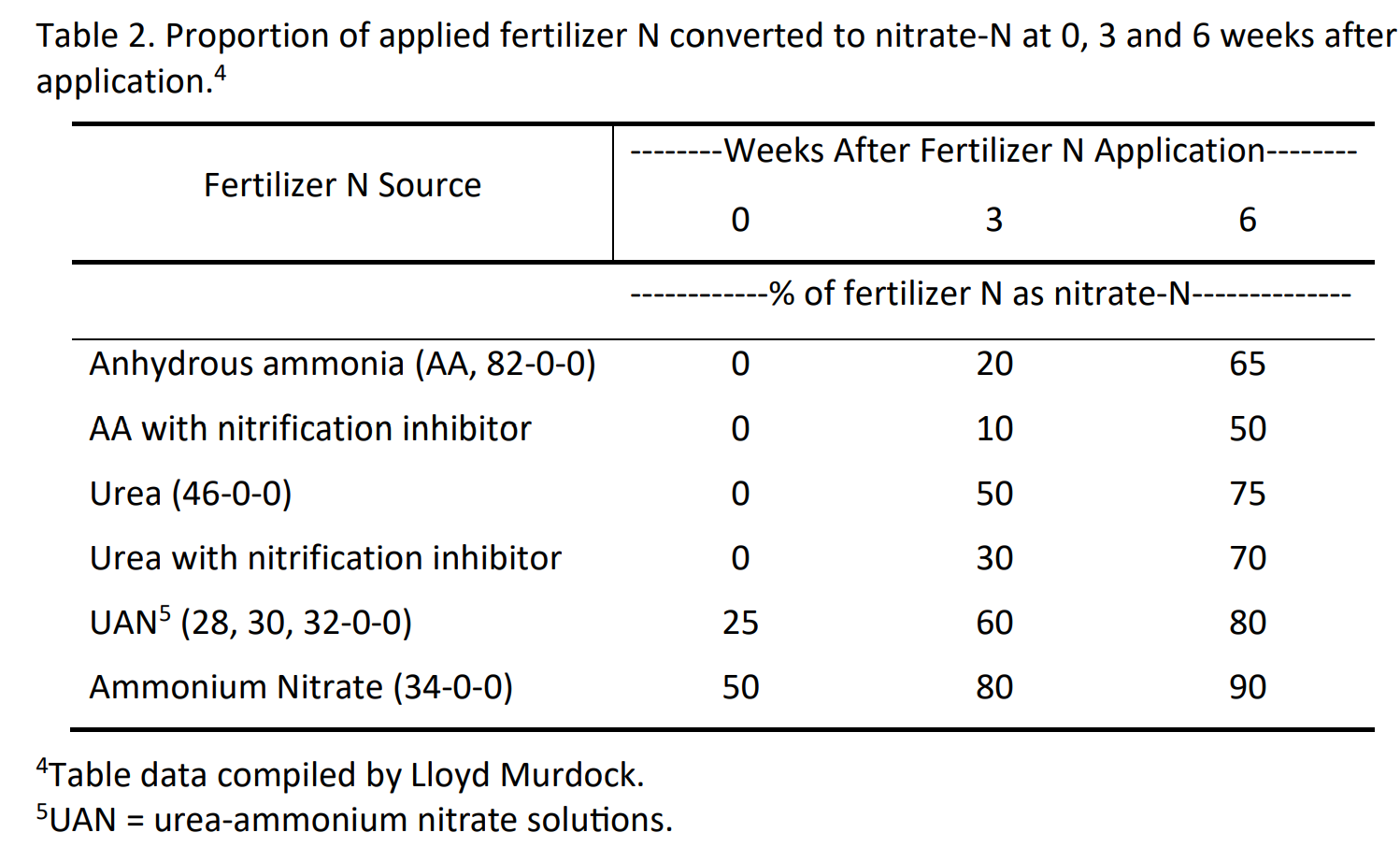
An example situation: Farmer has applied 200 lb N/acre as urea to an ‘intended for corn’ field made up of somewhat poorly drained soils 3 weeks before the rain began. Because of the series of heavy rains, the field was saturated for ten days. How much N was lost? Note: It is common that only portions of the field are saturated, and that the ponded field area decreases with time. This means that this calculation could be done to represent the best case, average, or worst case for the field.
Step 1: Calculate the amount of applied N that was in the nitrate-N form when saturation began. According to Table 2, 50% of the urea-N was in the nitrate-N form three weeks after application and:
200 lb fertilizer N/acre x (50%/100%) = 100 lb nitrate-N/acre.
Step 2: Calculate the amount of fertilizer N loss. Pessimistically, only two days are needed for soil biology to begin the denitrification process, so the field denitrification losses occurred over the remaining eight days of saturation. Again, pessimistically, assume 4% was lost each of the eight days, so:
10 days of saturated soil – 2 days for microbes to start denitrification = 8 days of denitrification
4% of nitrate-N lost per day x 8 days = 32% of the nitrate-N calculated in Step 1 was lost
32% x 100 lb nitrate-N/acre = 32 lb of nitrate-N/acre lost
200 lb fertilizer N/acre – 32 lb nitrate-N/acre lost = 168 lb fertilizer N/acre remaining
The N loss calculated in this example is not as high as many people would assume.
Soil nitrate testing. A soil nitrate-N test can help verify the calculated estimate of nitrate-N remaining in the field. Each soil sample should consist of about 15 cores taken to a depth of 12 inches, hand crushed and well mixed before filling a soil sample bag with the appropriate amount of soil and shipping immediately to a soil test lab (several labs, including Waters Ag Labs in Owensboro and Waypoint Analytical in Memphis, perform the test). Separate samples should be taken for upper and lower landscape positions, for well, moderately well, somewhat poorly and poorly drained soils, for fragipan and no-fragipan soils; and/or for undrained and tile drained field areas. Test results can be used to decide whether more N, and if yes, how much, is needed.
Other things of note. Unattached crop residue tends to float, and wind will push it across ponded waters, leaving piles of residue at the water’s edge as it drains away. Minimize loose residue with appropriate combine operation during harvest and by avoiding post-harvest residue mowing or tillage. Implementing these BMPs helps maintain a larger proportion of soil-attached residues that serve to limit floating residue movement and piling if ponded water is shallow. Figure 3 illustrates the consequences of depending on loose crop residue for erosion control.
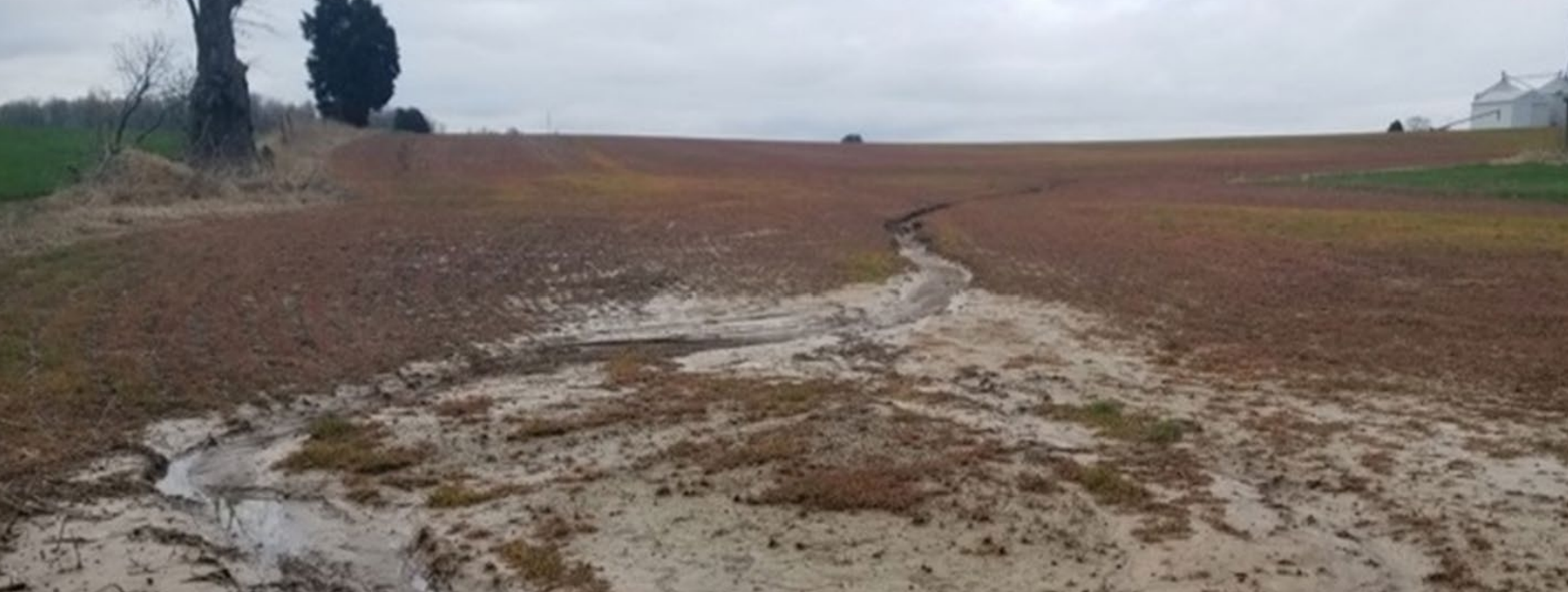
Figure 3. Soil erosion in a no-till field covered with residue but lacking a good cover crop. Photo courtesy of Brad Lee.
Ending on the positive, soil compaction due to the weight of water over soil during ponding is truly not a problem. Soil scientists get asked about this regularly. Soil pores are filled with water (soil air is expelled) as ponding begins and water-filled soil can’t be further compressed by the weight of water above.
Citation: Grove, J., Teutsch, C., Ritchey, E., Lee, B., Beck, G., 2025. After a Big Rain: N Loss, Erosion, and Other Things. Kentucky Field Crops News, Vol 1, Issue 4. University of Kentucky, April 11, 2025.
Dr. John Grove, UK Soils Research & Extension
(859) 568-1301 jgrove@uky.edu
Dr. Chris Teutsch, UK Extension Forage Specialist
(859) 562-1334 chris.teutsch@uky.edu
Dr. Edwin Ritchey, UK Extension Soil Specialist
(859) 562-1331 edwin.ritchey@uky.edu
Dr. Brad Lee, UK Extension Water Quality Specialist
(859) 257-0156 brad.lee@uky.edu
Glynn Beck, UK-KGS Hydrogeologist
(270) 827-3414 ext. 23 ebeck@uky.edu
